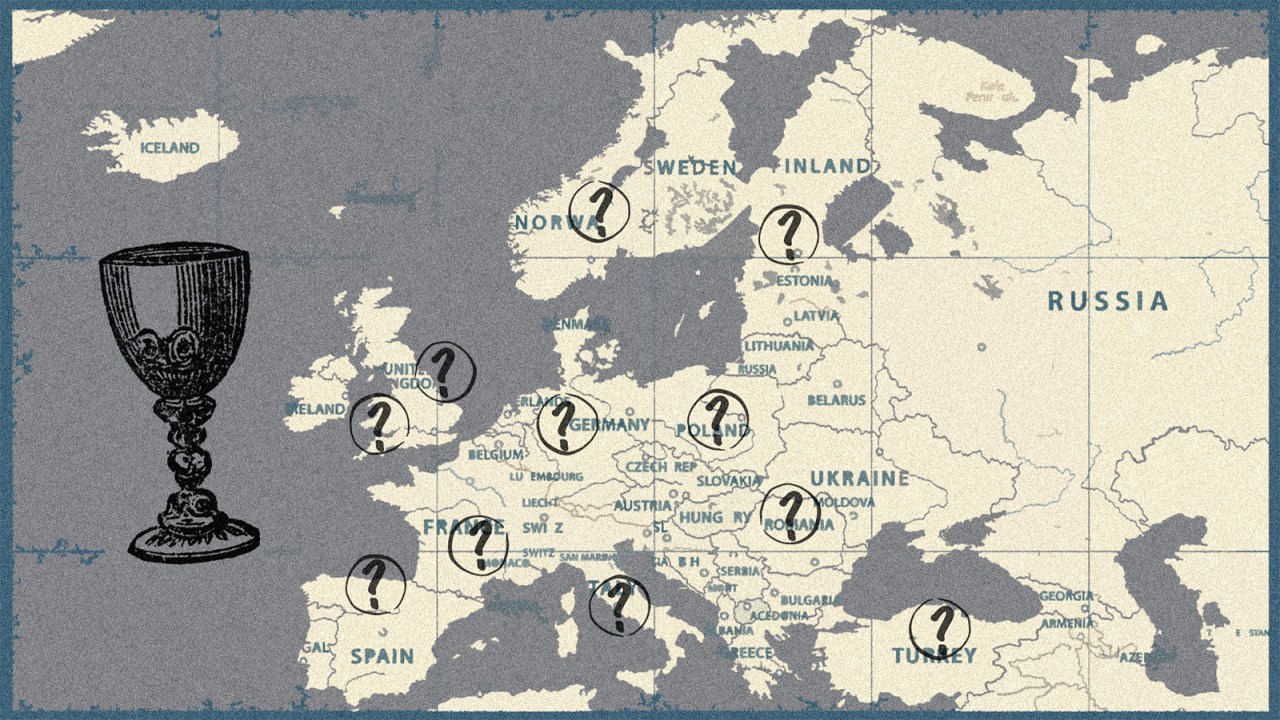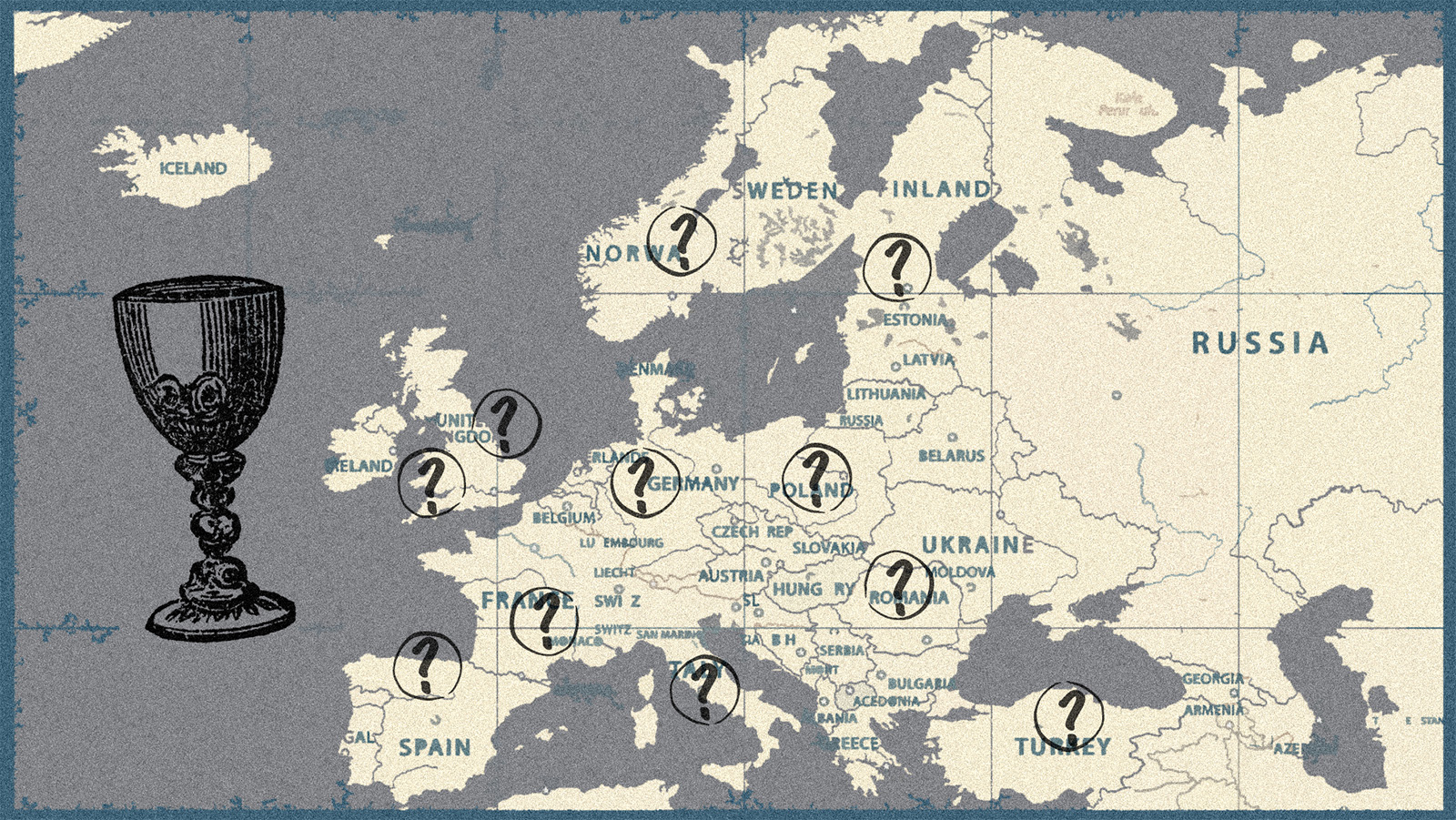If you visit Valencia Cathedral, you will find, in the old chapter house converted into a chapel, the Holy Grail, made up of a humble agate stone and kept safely behind glass. But if it is really the cup used by Christ at the Last Supper (and the Vatican recognises the possibility that it is), why are so many people still searching for it?
Christopher Dawes believes he might have the Grail at home on his mantelpiece in Brentford
There are too many theories about its true location to keep track of. Could it be in the Basilica of San Isidoro, León, given as a present to the King of Spain by an Andalusian emir? Was it taken to Glastonbury by Joseph of Arimathea and buried, causing a spring to flow that offers eternal youth? Is it hidden in a secret room in the Vatican? Or was it discovered by the Nazis in Spain, and is now kept somewhere by their descendants?
The author and Grail-hunter Christopher Dawes believes he might have it at home on his mantelpiece in Brentford. ‘I actually brought something back that might be it, but how do you prove it? The cup is supposed to give you eternal life if you drink from it. So if I’m still here 100 years from now, then I found it. A fella from Hounslow said he’d found it there. I’d have been really annoyed if he had. We went all the way to France, and it might have been just a short bus ride away from Brentford all the time.’
There are holy relics all over the place (more than 30 nails from Christ’s Cross in Europe alone). But the Grail is different. It is associated with the search for spiritual purity and eternal life. The world of Grail-hunters is one of conspiracy theories, myths, dreamers and dealers in ancient artefacts. ‘As you start to get closer to the Grail there are hundreds of stories, things that are lost that we don’t understand,’ Dawes tells me.
Part of the appeal of Grail-hunting is that it is such a homespun enterprise. ‘The only kit necessary is a hat, practical footwear, and a decent walking stick,’ says professional Grail-hunter Robert Stanley. ‘An interest in medieval metaphysics is also handy. You need the unshakable faith that just sometimes miracles actually happen. Of course, ground-penetrating radar would be nice too.’
Most hunters I speak to seem to have got into it by accident. Stanley became so hooked that he gave up his flat and comfortable life and moved to the heart of the action in the Occitania region of France, where the heretical Cathars might have squirrelled away the Grail – and where he was the researcher for a proposed Channel 4 documentary about the ‘real raiders of the lost ark’. The programme never happened – but Stanley lives there still, more than a decade later, and the Grail has taken over his life. For a while he was the only English-speaking guide taking daily groups of Grail tourists up the nearby mountain of Montségur to the site of a Cathar fortress. ‘We get around 150,000 visitors here. Looking for something they can’t define, all hoping to make sense of life.’
It sounds like harmless fun, but there’s a worrying side. Stanley tells me that near this holy mountain, there are often suicides – perhaps of people who pinned everything on having a mystical experience when they got to the top.
Strangely, just about all the hunters I spoke to no longer really believe that there is one definitive Grail to be found. One enthusiast, Stefan Hager, is pretty clear about it: ‘I am not interested in the material existence of a cup or whatever, even one held by Christ. It is about the stories that have survived centuries, the quest – and it is something very pure.’ Even a hardened old hunter like Hamilton White, an artefact-seller who came across a hoard of Templar treasure, has his doubts. ‘I don’t think it’s a physical thing. I used to before I got into it. But now I think it is a concept, about attaining happiness and contentment.’
The modern Church, so managerial in its language and aspirations, is largely uninterested in Grail-hunting. It wasn’t always so. The writer and Anglican theologian Charles Williams, who influenced J.R.R. Tolkien and C.S. Lewis, kept a secret notebook full of his jottings and thoughts on the sacred chalice and even thought of setting up a new Order of the Grail. He saw the hunt for the Grail as a noble and spiritual pursuit.
I think if Williams or Lewis or Tolkien came across modern-day Grail-hunters, they would understand, even applaud the sentiment. They understood the need for epic stories which stand at odds with our rational secular world. Father Chris Phillips, the priest at the Shrine of Our Lady church in Willesden, agrees. ‘Lewis understood the deep magic at the heart of the world. The Church has become dry in the way it speaks, in its liturgy. We need to talk about deeper things, mystery and beauty. The Grail story has all of these.’
The sad thing is that if we ever did find the definitive Holy Grail, it would end up in a museum as an artefact stripped of its sacramental power. ‘We’d probably be embarrassed by it,’ says the Dean of Southwark, Andrew Nunn. ‘Medieval Christians and those caught up in the Grail knew it as a place of study, art and poetry. We have lost the sense of the numinous and a language that sets the heart on fire.’

Dawes nearly shook off the Grail fever when he moved away from the hunt he started with the punk rocker Rat Scabies nearly 20 years ago. It was a hunt he undertook because ‘he had nothing better to do’ and it involved 18 months of intense activity and numerous trips to France. ‘I miss it. I miss the fun of it. When you can’t find your glasses or keys it is just annoying. I never found the hunt for the Grail annoying. One day Rat and I are going back. We promised we would do when we got old. I’m old now.’
Meanwhile, just when I feel that I myself might be shaking off the odd power of the Grail, no longer thinking about coincidences or dreaming of King Arthur, I have a conversation in a pub with a fellow priest, and find myself talking about the romance of it all. ‘Snap out of it, Steve,’ he says. ‘If I found the Grail, I’d get a certificate of provenance and authenticity, then stick it on eBay.’ That can’t be right, can it?







Comments